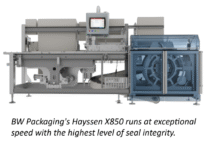
Obesity is a major concern across the globe as it is affecting people of all ages and income groups. A report by the Institute of Health Metrics and Evaluation (IHME), at the University of Washington, states that globally, 2.1 billion (210 crore) people are overweight or obese. Major brands are under pressure to combat obesity, and brands such as Nestlé and Coca-Cola are reformulating their products and ingredients to improve health outcomes and pledging to do even better in the near future.
Nestlé’s initiative is to reduce sugar, salt and fat content in its products by the end of 2020. To meet global wellness recommendations, the company is aiming to reduce 5% of added sugar content from food and beverage products, reduce the amount of sodium by 10% and reduce saturated fat by 10% in all relevant products. Nestlé asserts that it is not just replacing one ingredient with another but also focusing on no compromise of attributes like taste. Confectionery products like Aero, Quality Street, KitKat, After Eight, Animal Bar, Black Magic, Blue Riband, Breakaway, Caramac and chocolate bars will be stripped of sugar as part of the Nestlé UK pledge.
Replacing sugar with sugar substitutes
The Dietary Guidelines for Americans (published every 5 years by the US Department of Agriculture, together with the US Department of Health and Human Services) 2015-2020 state that on an average Americans consume more than 16 teaspoons daily of added sugar from processed products like sweetened drinks, cookies and cakes. The over-consumption of sugar may lead to heart diseases, diabetes and even cancer. Therefore, cutting down sugar consumption and replacing it with healthier alternatives are among the best options.
Moreover, governments all across the world are taking sugar intake very seriously. A report states, from Portugal to Thailand more than 25 countries have already introduced a sugar tax on beverages. The initiative has opened up new areas of business in making sugar-free beverages like Diet Coke and Coca-Cola with zero sugar.
Sugar is an important ingredient in the food and beverage industry as it provides taste and texture to the final product. Consumer demand is forcing food and drink manufacturers to invent new alternatives for sugar. Carbonated beverage and confectionery industry leaders are working on reformulating the product by removing or replacing sugar while maintaining familiar taste attributes.
FSSAI – reduce trans fats to less than 2% by 2022
Fats have multifunctional benefits like adding nutrition, flavor and palatability, texture, shelf life extension, lubrication and volume addition. Researchers are looking for healthy fats and fat substitutes to be used in food products in place of industrial trans fats. Industrial trans fats such as partially hydrogenated oils are age-old favorites of the food industry because they are cheap and have a longer shelf life. But consumption of trans fat leads to more than 500,000 deaths of people worldwide every year. In India, the Food Safety and Standards Authority of India (FSSAI) has launched a campaign for the elimination of industrially produced trans fat in the food supply chain. FSSAI aims to reduce the levels of trans fats in India’s food supply from the current 5% to less than 2% by 2022.
Dairy fats, monounsaturated fats like olive oils and polyunsaturated fats such as fish oils are gaining popularity in the food industry. However, keeping in mind that too much fat of any kind is still not good for health, the trend is to select the type of fat and its use in the appropriate quantity to keep the end food product composition in a healthy range.
Low sodium and no sodium
A greater number of consumers increasingly realizing that they can actually influence their health by cutting down excess consumption of sodium. Consumer concern on excessive salt use is inducing food manufacturers to also think about reducing its use in their products. In fact, there is ongoing research for more options for salt replacers or salt substitutes without compromising end product taste and palatability. Manufacturers of food and beverages are aware that consumers find it difficult to opt for a low salt diet unless they are offered the same taste as they are accustomed to.
The low sodium and no sodium trend have given a new shape to the food and beverage sector in terms of growth, technological challenges and advancements. Major manufacturers are working on making low sodium and no sodium food products and beverages to meet the health concerns of consumers. PepsiCo has started to replace salt in its Lays potato chips with ‘designer salt’ to make chips healthier. Krafts Foods aims to develop no added-salt concepts for its ketchup, beans and soups.
Recent research indicates that food and beverages with low sugar, sodium, saturated and trans fats help to improve overall health and delay non-communicable diseases like diabetes and cardiovascular diseases. Moreover, FSSAI’s new (draft) labelling and display regulations encourage consumers to make healthier food choices.
IndiFoodBev — authentic, impactful and influential
An English-language food and beverage processing and packaging industry B2B platform in print and web, IndiFoodBev is in its third year of publication. It is said that the Indian food and beverage industries represent approximately US$ 900 billion in revenues which implies more than 20% of the country’s GDP. Eliminating the wastage on the farmside can help to deliver more protein to a higher number of the population apart from generating sizable exports. The savings in soil, seeds, water, fertilizer, energy and ultimately food and nutrition could be the most immense contribution that country is poised to make to the moderation of climate change.
To improve your marketing and grow sales to the food and beverage processing and packaging industry, talk to us. Our research and consulting company IppStar [www.ippstar.org] can assess your potential and addressable markets in light of the competition. We can discuss marketing, communication, and sales strategies for market entry and growth.
Suppliers and service providers with a strategy and budget for targeted marketing can discuss using our hybrid print, web, video, and social media channels to create brand recognition linked to market relevance. Our technical writers are ready to meet you and your customers for content.
The second largest producer of fruit and vegetables in the world is continuously expanding processing capacities and delivery systems with appropriate innovative technologies. We cover product and consumer trends, nutrition, processing, research, equipment and packaging from farm to thali. Get our 2025 media kit and recalibrate your role in this dynamic market. Enhance your visibility and relevance to existing markets and turn potential customers into conversations. Ask for a sample copy of our bi-monthly in print or our weekly IndiFoodBev eZine each Wednesday.
For editorial info@ippgroup.in — for advertisement ads1@ippgroup.in and for subscriptions subscription@ippgroup.in
Naresh Khanna – 10 February 2025
Subscribe Now











